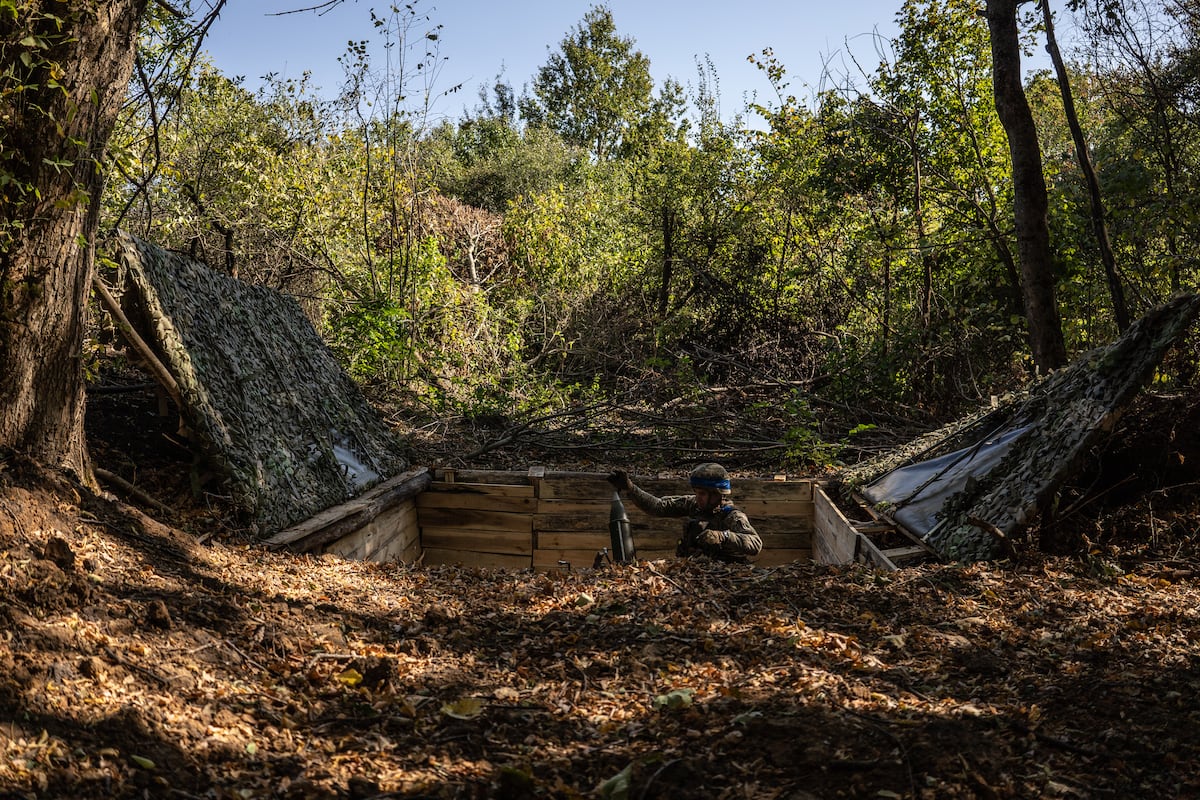The fine print of a contract is usually decisive, and this is where the Ukrainian media has focused its interest after learning of Washington’s authorization for kyiv troops to use American long-range ATACMS missiles against Russia. The decision, of great political significance because it challenges the Russian threat to escalate the conflict, comes in stoppage time, after more than a year of Ukrainian insistence to achieve it and when Joe Biden has less than two months left in the US presidency. The Ukrainian optimism is contained because it considers that it is too late to change the course of the war and because the fine print establishes that the ATACMS can only be used against targets in the Russian province of Kursk.
There has been no official US confirmation of what was published in the press, but Ukrainian President Volodymyr Zelensky accepted the information as good in a message late on Sunday: “Attacks are not carried out with words. These things are not announced. The missiles will speak for them.”
Last August, the Ukrainian Armed Forces began a partial occupation of the Russian region of Kursk, adjacent to the Ukrainian province of Sumi. The operation, a personal decision by Zelensky, has several objectives: to demonstrate to the Kremlin that it is vulnerable on its own territory; force the Russian army to transfer troops from other sectors of the front to Kursk, and have a piece of the invading country as an asset for future peace negotiations.
Russian counteroffensive in Kursk
Ukraine has lost a third of the Kursk territory that it had once occupied and the forces of the Russian commander in chief, Valery Gerasimov, have begun a counteroffensive in which they have the support of more than 10,000 North Korean soldiers, according to Western intelligence services. . This North Korean presence would be the justification used by the Pentagon to finally approve the use of ATACMS. Ukraine already had this weapon in its arsenal since 2023, although available only for use within its borders.
The key is whether, as US media has reported, ATACMS can only be used against Russian positions in Kursk. The qualitative leap would be limited, taking into account that Ukraine is already hitting its enemy in this area with American Himars missiles, which are precision but medium-range — 80 kilometers. The confirmed objectives have been bridges, anti-aircraft systems and concentrations of military machinery. The ATACMS, which can be fired from the same batteries as the Himars, have a range of 300 kilometers. This would allow shooting at targets in Kursk from a greater distance, that is, with more security guarantees that the launcher is not identified and destroyed.
The Institute for the Study of War (ISW), a US military think tank, believes that restricting the use of ATACMS only in Kursk is a setback for Ukraine and that a significant change would be to authorize Kiev to “strike legitimate military targets within the Russian operational rear, not just in Kursk.”
Ukrainian military sources have told the military news outlet The War Zone that the main function of the ATACMS is that “they will be a conventional strategic deterrence weapon, taking into account the current situation.” That is, a weapon that will put the Kremlin on alert before making certain decisions. These same sources also lament in The War Zonethat it is essential that they be allowed to launch the ATACMS far from the Ukrainian borders, and not only against military targets, but against the Russian energy system. On Sunday, Russia restarted massive bombings against the Ukrainian energy grid, once again causing power outages throughout the country.
John Helin, a researcher at the Finnish defense analysis group Black Bird, also highlights something that senior ranks of the Ukrainian army have been warning about since 2023: Russia has been relocating bases and logistics centers in its rear for some time to leave them out of reach of the ATACMS. “The Russians have already moved many of their air units out of reach of the ATACMS. Limiting this weapon to Kursk will also add more limitations. The Russians will probably reorganize their command posts, logistics and air bases so as not to be so exposed in Kursk,” says Helin. This expert confirms that moving these possible objectives further does benefit the Ukrainian resistance in Kursk because the Russian military network will be more physically spaced and will need more time to act on the front.
Confidential figure
The War Zoneconcludes that equally important is determining how many ATACMS units Ukraine will have. The figure is confidential. Serhii Zgurets, director of the military study group Defense Express, estimated this Monday that there could be a hundred. There would also be about 100 British-French Storm Shadow/SCALP long-range missiles that the Ukrainian Air Force would have in their possession, according to Zgurets. In the ATACMS range alone (beyond Kursk) there are almost 250 Russian military installations involved in the invasion, according to the ISW. The Storm Shadow/SCALP have a greater range than the ATACMS, 560 kilometers.
In Ukraine, it is assumed that Biden’s decision will move Paris and London to also authorize the use of their missiles against targets on Russian soil. The diary The Figaropublished on Monday morning that the British and French governments had already given their approval, but a few hours later the information was removed from the website of this medium. The Ukrainian agency RBC also reported, from anonymous sources, that Paris and London had accepted that their missiles could only hit Kursk.
Germany, which has the long-range Taurus missiles, continues to deny their transfer to kyiv, but the newspaper Bildannounced this Monday that the German Ministry of Defense has given the green light to the shipment of 4,000 long-range bomb drones that can be fired at targets in Russia. The fleet of drone bombs is precisely the greatest threat that Ukraine has proven to have against the Kremlin in its territory, with periodic attacks even more than 1,000 kilometers from its borders.
too late
The news about the ATACMS has been received with mixed feelings in Ukraine. “This is a story of a waste of time. And what is worse, lives have been lost, as in the entire history of arms supply. [occidental]. It will not change the situation significantly, but it will make it a little easier for us and a little more difficult for them,” he wrote in the Ukrainian media. Espresso political scientist Yurii Bogdanov.
The history of the relationship between Zelensky and his allied countries has been marked by a strategy of persistence and diplomatic pressure. Whether with the ATACMS, with the Leopard or Abrams tanks, with the F-16 planes or the Patriot air defense missiles, the sequence has always been the same: after months of refusals, the powers in NATO have ended up giving their authorization. These months of delay, as the head of European diplomacy, Josep Borrell, acknowledged to Morning Express on November 11, have meant a serious setback for the invaded country.
The imminent use of the ATACMS against Russian soil, as understood from Zelensky’s words, will allow us to know if the Kursk limit is real or if they go deeper into the Russian map. Biden still has a few weeks to decide whether to expand his radius of action, before Donald Trump, in favor of ending the war as soon as possible, even if it is at the cost of painful concessions for Ukraine, assumes the US presidency in January. Helin also understands that Biden’s move is a way to pressure Trump to continue assistance to Ukraine. “It all depends on the point of view,” says Helin, “it seems good to help the Ukrainians, but it comes too late to have a significant impact on the war, especially if it is limited to one territory.”








